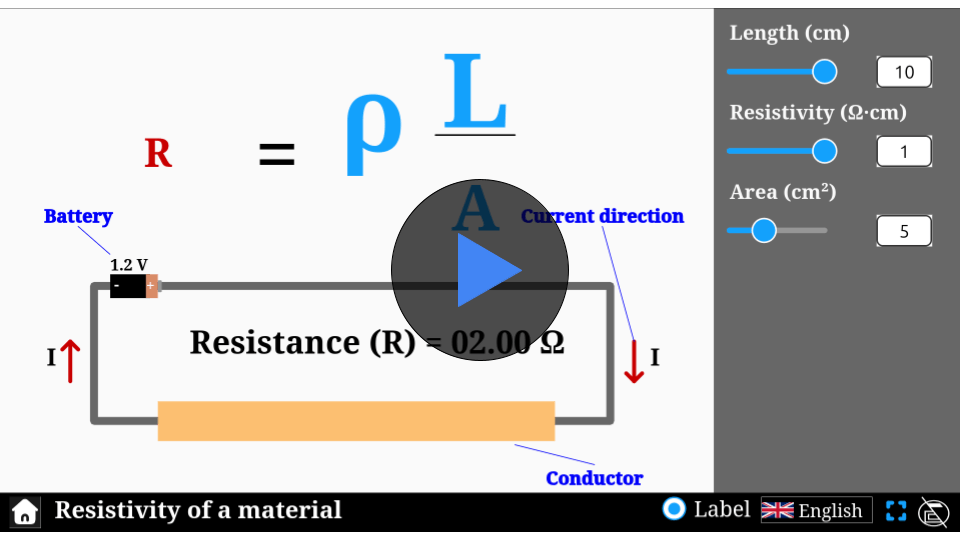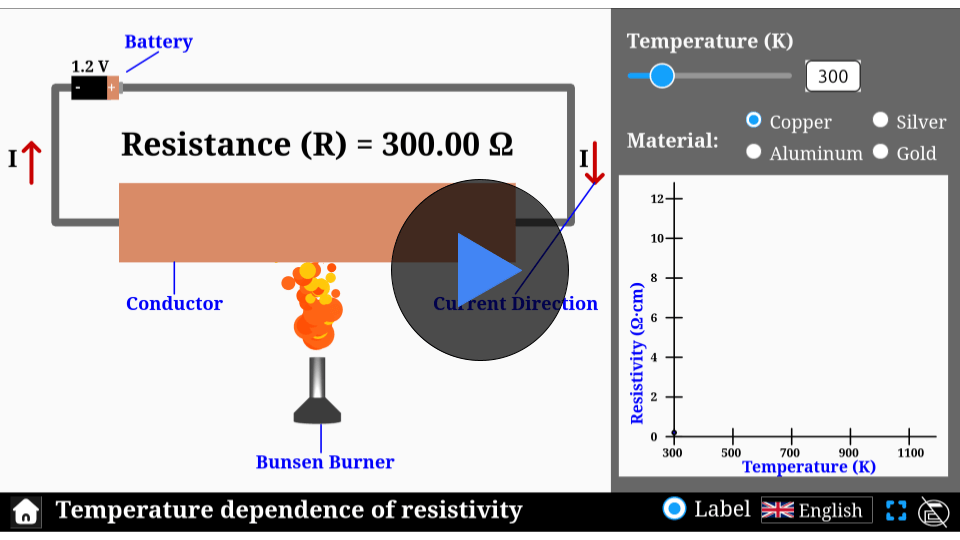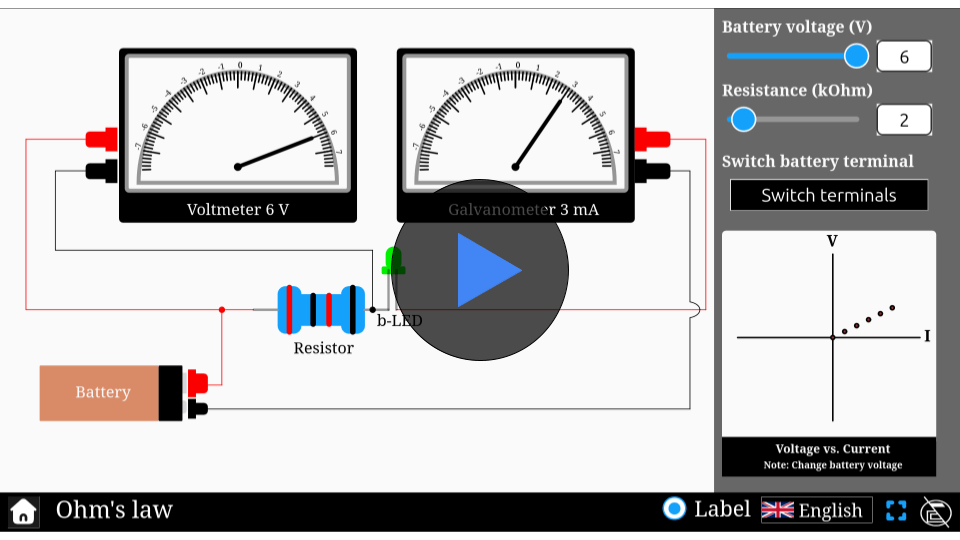Ohm's law simulator
Explore Ohm's law interactively: discover the relationship between voltage, current, and resistance with our engaging simulator.
Ohm's law
Electricity powers our world, from the smallest gadget to the largest industrial machines. But have you ever wondered how the relationship between voltage, current, and resistance works? Step into the world of Ohm’s Law with our interactive simulator. Adjust the parameters, experiment with different resistances, and see how voltage and current interact in real time. Uncover the fundamental principle that governs electrical circuits — start your exploration today!
\( V = I R
\)
Mathematical description
where:
- \( V \) is the voltage across conductor
- \( I \) is the current flowing through conductor
- \( R \) is the resistance of the conductor
FAQs on Ohm's law
Qus 1. What is Ohm’s Law?
Ohm’s Law states that the current through a conductor between two points is directly proportional to the voltage across the two points. It’s expressed as V = IR, where V is voltage, I is current, and R is resistance.
Qus 2. Describe Ohm's law from electron's perspective.
From an electron’s perspective, Ohm’s Law describes how easily electrons can flow through a material. When a voltage is applied, it creates an electric field that pushes electrons to move — this flow is the electric current. The material’s resistance determines how much the electrons get “slowed down” or scattered as they move, which affects how much current flows for a given voltage.
Qus 3. What are the units used in Ohm’s Law?
Voltage is measured in volts (V), current in amperes (A), and resistance in ohms (Ω).
Qus 4. What are the limitations of Ohm’s Law?
Ohm’s Law doesn’t apply to non-ohmic materials, where current and voltage don’t have a linear relationship, such as in semiconductors or filament lamps.
Qus 5. Can Ohm’s Law be used for AC circuits?
Yes, but for AC circuits, Ohm’s Law is applied using impedance (Z) instead of resistance (R), so the formula becomes V = IZ.





Hi, great simulator! It would be even better with a Voltage vs. Current graph to make the visualization clearer.
The I–V characteristics of an Ohmic resistor are implemented in this simulator.
https://explerify.com/simulator-i-v-characteristic-of-a-ohmic-resistor/
Perfect!